Are you carrying the weight of stress and anxiety, or perhaps craving an escape from the treadmill of daily life? We’re all human, it’s normal to feel this way. Science interjects with a promising solution – hiking.
Research evidence suggests that a simple walk in nature can dramatically boost mental well-being and serve as a warrior against depression. In this article, we will explore 15 top tips on how to turn hiking into a powerful ally for personal growth.
Buckle up! Together, let’s journey towards nurturing a healthier mind!
Key Takeaways
- Hiking has numerous physical benefits, including improving cardiovascular health, enhancing balance and strength, increasing bone density, and supporting weight loss.
- Hiking also has many mental and emotional benefits, such as reducing stress, promoting mental well-being, allowing for unplugging from technology, boosting self-esteem and confidence, improving sleep quality, and enhancing memory and brain function.
- Hiking builds community and connections by bringing people together and encouraging social interaction. It provides opportunities for socializing, bonding, companionship, camaraderie,and support.
- Essential hiking gear includes sturdy hiking shoes or boots, comfortable clothing that allows for movement,a backpack with a hydration pack to stay hydrated on the trail,and navigation tools like maps or GPS.
Physical Benefits of Hiking
Hiking improves cardiovascular health, enhances balance and strength, increases bone density, and supports weight loss.
Improves cardiovascular health
Hiking is great for heart health. It helps lower blood pressure and controls blood sugar levels. The fun of hitting the trails keeps your heart pumping, thus improving cardiovascular fitness.
This activity also strengthens core muscles. Plus, it lowers cholesterol which means less risk of heart disease in the future! Hikers gain muscle strength and endurance that stick with them long after they’ve left the trailhead behind.
Boosting overall wellness is just another way hiking improves cardiovascular health!
Enhances balance and strength
Hiking is not just fun. It makes you strong and balanced too. I feel my muscles working as I walk up steep trails or over rough rocks. My legs do a lot to keep me steady when the path is tricky.
Hiking often can help here.
Building your balance and strength doesn’t need a gym. Nature does it too! A tree root on the trail can be like stepping over an exercise step box. Walking uphill helps your leg muscles get strong, much like a stair-climbing machine would do in a fitness center.
Increases bone density
Hiking works wonders for your bones. The climb, the walk, and every uphill step you take help build bone mineral. This is because hiking is a weight-bearing exercise. Your bones must work hard against gravity when you hike.
All this effort promotes bone density in your body. High bone density means solid, strong bones that don’t break easily. Hiking not only boosts skeletal health but can also reverse bad effects of osteoporosis – a health issue caused by low bone mass.
So put on those hiking boots often; they may just be the best thing to strengthen your bones!
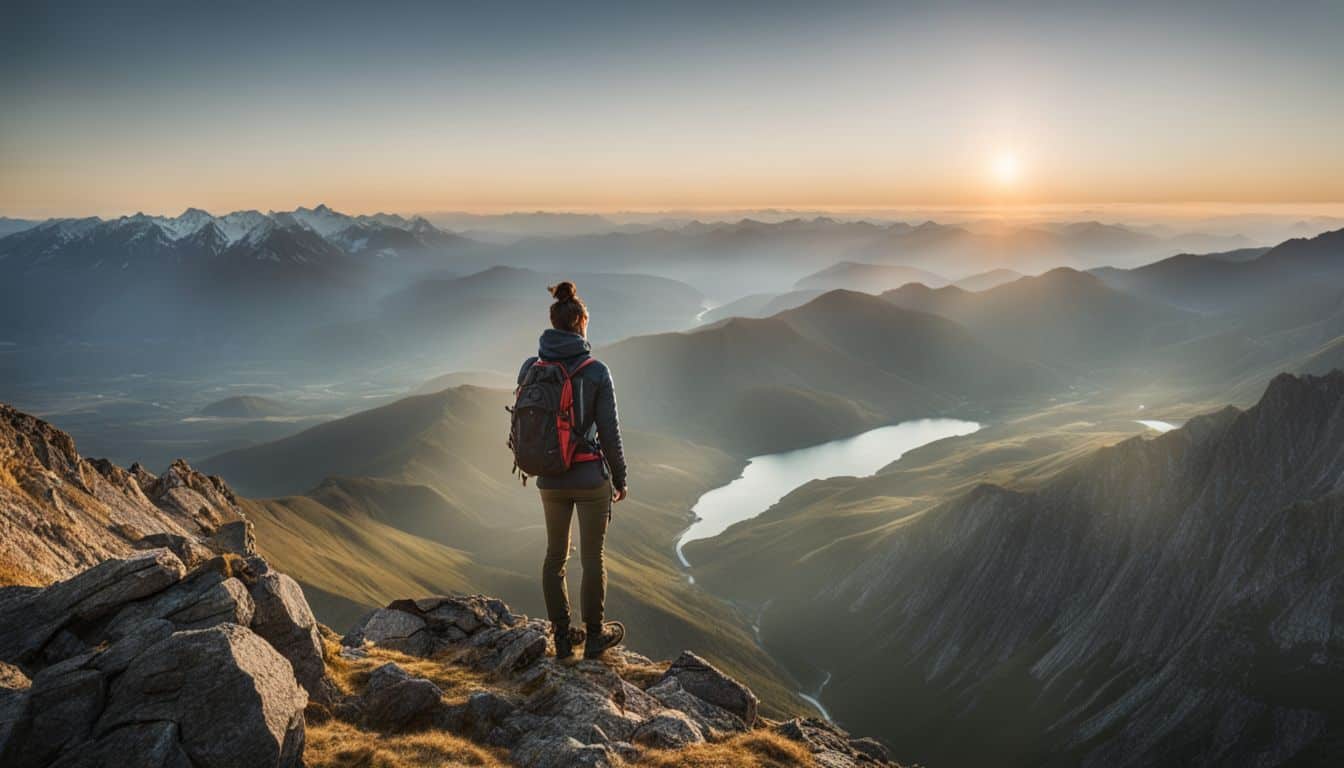
Supports weight loss
Regular hiking is a great way to support weight loss. It’s an effective and enjoyable form of physical activity that burns calories and helps you shed pounds. In fact, even a small reduction in weight, like 5%, can have significant health benefits.
Hiking involves walking, which is a fantastic exercise for weight loss and overall fitness. Not only does it burn calories, but it also strengthens your muscles and improves your cardiovascular health.
So if you’re looking to lose weight and get fit, hitting the trails for regular hikes can be a wonderful strategy to reach your goals!
Mental and Emotional Benefits of Hiking
Hiking not only benefits us physically, but it also has a profound impact on our mental and emotional well-being. From reducing stress to boosting self-esteem, exploring the great outdoors can do wonders for our mental health.
Discover the transformative power of hiking and uncover 15 top tips for personal growth along the way. Read more here!
Reduces stress and promotes mental well-being
Being out in nature while hiking has incredible benefits for reducing stress and promoting mental well-being. It’s been proven that spending time in the great outdoors can boost your mood and improve your mental health.
Hiking allows you to escape from the stresses of daily life and immerse yourself in the beauty of nature, providing a much-needed break for both your mind and body. Not only does it help calm anxiety, but it also encourages physical activity, which releases endorphins, known as “feel-good” hormones.
This combination of exercise and natural tranquility creates a powerful mind-body connection that promotes overall wellness. So lace up your hiking boots, hit the trails, and experience the amazing stress-relieving benefits of being in nature!
Allows for unplugging from technology
When we go hiking, we have the opportunity to disconnect from our screens and immerse ourselves in the natural environment. It’s a chance to take a break from technology and engage with the world around us.
By leaving our devices behind, we can fully appreciate the beauty of nature and find peace in its simplicity. Not only does unplugging from technology during hiking give our eyes a break from screens, but it also allows our minds to detach from constant notifications and distractions.
This digital detox can help reduce stress levels, improve focus, and enhance creativity. Research even shows that disconnecting from technology during outdoor activities like hiking can boost creative problem-solving abilities by as much as 50%.
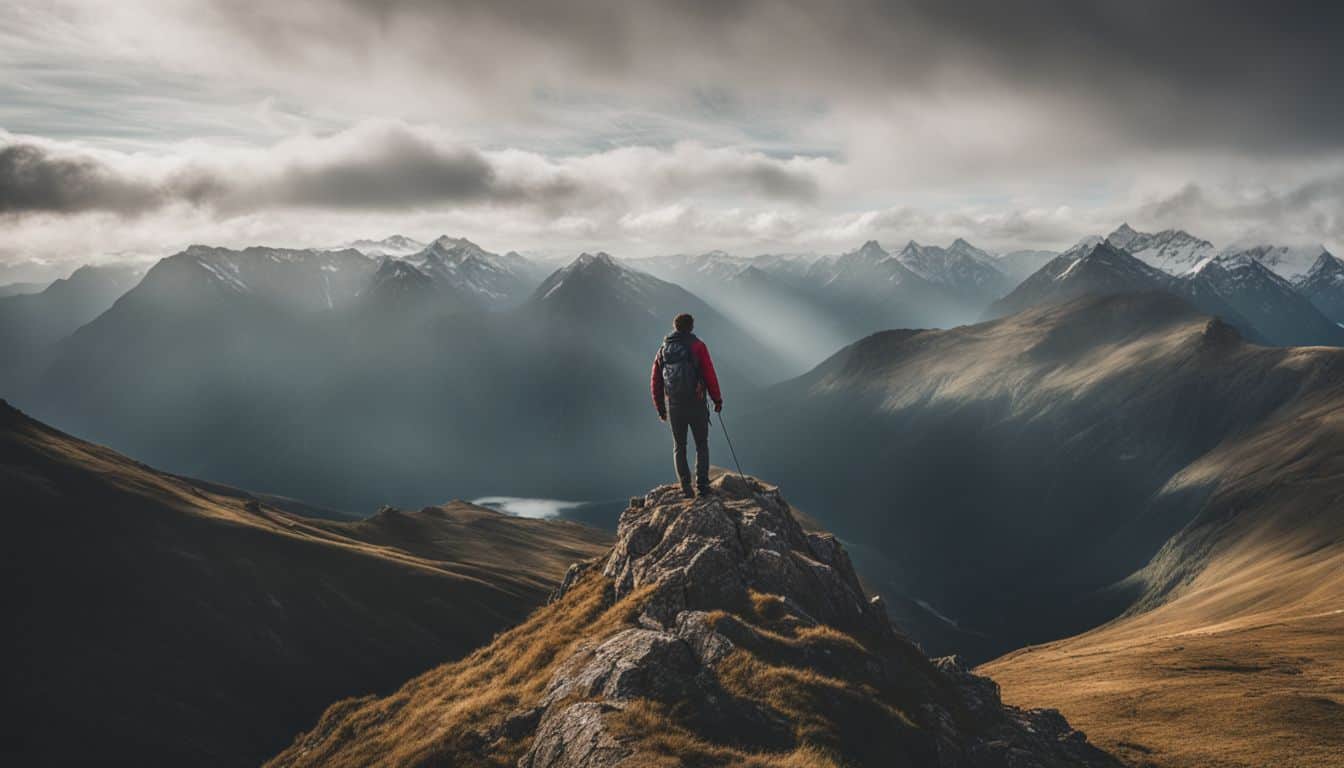
Boosts self-esteem and confidence
Hiking is incredible for boosting my self-esteem and confidence. When I’m out on the trails, surrounded by nature’s beauty, I feel a sense of accomplishment and pride in what my body can do.
The physical challenges of hiking, like climbing steep hills or navigating rocky terrain, push me to go beyond my limits and prove to myself that I am capable of so much more than I thought.
Not only does hiking make me physically stronger, but it also strengthens my belief in myself and boosts my self-confidence. It’s an empowering experience that helps me grow as a person and believe in my abilities.
Improves sleep and relieves insomnia
Regular hiking can have a positive impact on your sleep and help relieve insomnia. When we engage in physical activity like hiking, our bodies release endorphins that promote relaxation and reduce stress, making it easier to fall asleep at night.
Additionally, spending time outdoors exposes us to natural sunlight, which helps regulate our internal body clock and improve sleep patterns. So if you’re struggling with insomnia or want to enhance your sleep quality, consider adding regular hikes into your routine as a natural remedy for better sleep.
Enhances memory and brain function
Hiking is not just great for the body, but it’s also amazing for the brain! When we go hiking, different parts of our brain get to work. It engages our prefrontal cortex, which helps with decision-making and problem-solving.
It also activates our amygdala, which plays a role in emotion regulation and memory formation. By getting out on the trail, we can experience improved cognitive function, better memory retention, and increased mental clarity.
Hiking is like exercise for the brain! So lace up your shoes and hit the trails – your brain will thank you!
Exploring Hiking for Mental Well-being: A Comprehensive Guide
Hiking is not only a great way to stay physically fit, but it also has numerous benefits for your mental well-being. Spending time in nature can help reduce stress and promote overall mental wellness.
It allows you to unplug from technology and connect with the natural world around you. Hiking can boost your self-esteem and confidence as you challenge yourself to reach new heights and overcome obstacles on the trail.
In addition, hiking improves sleep quality and can relieve insomnia. Being out in nature helps calm the mind, allowing for better relaxation at night. It also enhances memory and brain function, making it easier to focus and concentrate on tasks throughout the day.
To fully explore the benefits of hiking for your mental well-being, it’s important to plan ahead. Research family-friendly trails or seek recommendations from locals who know the area well.
Start with shorter, easier hikes that match your fitness level, then gradually increase difficulty and distance as you build up your strength.
Remember to stay safe while hiking by staying hydrated, protecting yourself against sun exposure, being aware of wildlife and potential hazards on the trail, informing others about your plans before heading out, and sticking to designated trails.
By following these tips and immersing yourself in nature through hiking, you can experience improved mental well-being while enjoying all that the great outdoors has to offer.
Social Benefits of Hiking
Hiking builds community and connections, encouraging social interaction and bonding.
Builds community and connections
Hiking is not just a solitary activity; it can also bring people together and create a sense of community. When we hike with others, we have the opportunity to form new friendships and build social connections.
Being part of a hiking group or joining hiking events allows us to meet like-minded individuals who share our love for nature and adventure. These shared experiences can lead to strong bonds and lasting relationships.
Group outings provide opportunities for social interaction, where we can engage in conversations, laugh together, and support each other along the way. Whether it’s going on regular hikes with friends or joining organized hiking clubs, being part of a community of hikers brings a sense of belonging and camaraderie.
Encourages social interaction and bonding
Hiking is not only a great way to connect with nature, but it also encourages social interaction and bonding among individuals. When we hike with others, whether it’s friends, family, or even joining hiking groups, we have the opportunity to socialize and build connections.
It provides us with companionship and camaraderie as we explore the trails together. Research has shown that social interaction during hiking can have a positive impact on our happiness and well-being.
Being surrounded by like-minded people who share a love for hiking can create a sense of community and support. So grab your hiking buddies or join a local group, because hitting the trails together is not just good for your physical health but also nourishes your social well-being.
Essential Gear for Hiking
When it comes to essential gear for hiking, make sure you have sturdy hiking shoes or boots, comfortable clothing that allows for movement, a backpack with a hydration pack to stay hydrated on the trail, and navigation tools such as maps, compass, or GPS.
Hiking shoes/boots
Hiking shoes/boots are really important for a comfortable and safe hiking experience. There are different types of hiking boots available, like low-cut boots and mid-cut boots. Hiking shoes are a mix of synthetic/leather boots and trail running shoes.
Good footwear is the most basic and essential equipment for hikers. Choose the right pair that fits well and provides good traction on various terrains. It’s also important to break in your new hiking shoes before hitting the trails to prevent blisters or discomfort during your hike.
So make sure you invest in a reliable pair of hiking shoes/boots to keep your feet happy on your outdoor adventures!
Comfortable clothing
When it comes to hiking, comfortable clothing is key to a successful and enjoyable experience. It’s important to choose pants that are both sturdy and flexible, allowing for unrestricted movement on the trails.
Look for moisture-wicking fabric that helps keep you dry and comfortable throughout your hike. Additionally, well-fitting shoes or boots with traction, support, and protection are essential to prevent discomfort and ensure stability on uneven terrain.
Breathable fabric in your pants can help regulate body temperature and keep you cool or warm depending on the weather conditions. Remember to select complementary tops, bottoms, jackets, and accessories that suit the hiking conditions for a more enjoyable adventure.
Backpack with hydration pack
A hydration pack is a backpack with a special water reservoir inside. It’s an important piece of gear for hikers like me because it makes it really easy to stay hydrated while out on the trails.
The great thing about these packs is that they have a built-in bladder or container that can hold water, so you don’t have to worry about carrying around separate water bottles. You simply fill up the reservoir before your hike, and then there’s usually a tube with a bite valve attached to the front strap of the backpack, which allows you to drink without stopping or taking off your pack.
It’s such a convenient way to keep myself hydrated during long hikes! Hydration packs are available for all kinds of outdoor activities like hiking, biking, and running. When choosing one, I look at both the size of the reservoir (how much water it can hold) as well as how much other gear or stuff I can carry in the backpack part.
Layering for varying weather conditions
Layering is essential for hiking in varying weather conditions. It gives me the flexibility to adjust my clothing based on changes in the weather and how much physical activity I’m doing.
With layering, I can stay comfortable and safe during my hiking adventures. This is especially important when it’s cold outside because layering helps me stay warm and keep going. I make sure to have clothing that can be layered together for maximum warmth or worn separately for more freedom of movement.
That way, I can easily adapt my outfit based on the weather conditions and how active I am. Layering really allows me to get the most out of my hikes!
Navigation tools (maps, compass, GPS)
Navigation tools like maps, compasses, and GPS are really important for hiking. They help you find your way and stay on the right path. Even if you have a GPS, it’s still good to know how to use a map and compass.
You can also use apps or devices with GPS to navigate while hiking. Topographic maps are especially helpful because they show detailed information about the trails and terrain. So make sure you have these navigation tools with you when you go hiking!
First aid kit
A first aid kit is a must-have when you go hiking. It’s important to be prepared for any injuries or emergencies that may happen along the way. You can buy prepackaged kits that include everything you need at a reasonable price.
Some essential items to have in your kit are antiseptic wipes, bandages, gauze pads, medical tape, scissors, and gloves. It’s also a good idea to include a CPR face shield/mask, tweezers, moleskin for blisters, and a multi-tool.
Don’t forget important items like a thermometer, survival blanket, whistle, and light source. A first aid kit will help you take care of any injuries and stay safe while enjoying your hike.
Getting Started with Hiking
Start by researching family-friendly trails, seeking recommendations from locals, and starting with shorter, easier hikes before gradually increasing difficulty and distance.
Research family-friendly trails
When planning a family hike, it’s important to research family-friendly trails. Look for trails that are specifically labeled as suitable for kids or families. These trails often have easier terrain and shorter distances, making them more enjoyable for young hikers.
You can also ask locals or fellow hiking enthusiasts for recommendations on kid-friendly trails in your area. By doing your research, you can ensure that the trail you choose will be safe and enjoyable for everyone in the family.
Remember to consider the interests and abilities of your children when selecting a trail, so they can fully enjoy their outdoor experience.
Seek recommendations from locals
Getting recommendations from locals is a great way to learn about hiking trails and get insider knowledge. Residents who live in the area have valuable insights that can enhance your hiking experience.
They can suggest the best trails for different difficulty levels, scenic spots to visit, and even share interesting facts about the local history or wildlife. By tapping into their expertise, you can ensure that you make the most of your hiking adventure and discover hidden gems that may not be mentioned in guidebooks or online resources.
So don’t hesitate to reach out to nearby residents or local hikers for their recommendations; they are often eager to share their knowledge and help fellow outdoor enthusiasts.
Start with shorter, easier hikes
When it comes to hiking, it’s important to start with shorter and easier hikes, especially if you’re a beginner or have low fitness levels. Choosing trails that are suitable for beginners will help build your confidence and allow you to gradually increase difficulty and distance over time.
Look for family-friendly trails or seek recommendations from locals who know the area well. By starting small, you can enjoy the beauty of nature without feeling overwhelmed or discouraged.
So lace up your hiking shoes and hit the trail – there’s a whole world waiting for you to explore!
Gradually increase difficulty and distance
As a hiking enthusiast, I know the importance of gradually increasing difficulty and distance in my hikes. It’s not just about pushing myself physically, but also about personal growth and achievement.
By incrementally raising the level of challenge and distance, I can prepare my body for hiking at higher elevations and conquer mental hurdles along the way.
One key aspect is conditioning my body to tackle longer and more challenging hikes. If I live at sea level but plan on hiking at higher altitudes, it’s essential to train for elevation gain by gradually increasing the difficulty of my hikes over time.
This allows my body to adapt to the changes in oxygen levels and helps prevent altitude sickness.
Besides physical preparation, overcoming mental obstacles during hikes requires specific strategies. For example, stepping into discomfort can be beneficial as it allows me to push past limitations and expand my comfort zone.
Being mindful while hiking also helps me stay focused on the present moment instead of getting overwhelmed by thoughts or fears.
Safety Tips for Hiking
Stay hydrated and nourished, protect against sun exposure, be aware of wildlife and potential hazards, inform others of your hiking plans, and stay on designated trails.
Stay hydrated and nourished
Staying hydrated and nourished is really important while hiking. It helps to keep you safe and feeling good. Before you start your hike, make sure to drink plenty of water to prevent dehydration.
Avoid drinking alcohol before hiking because it can also make you dehydrated. It’s a good idea to bring food that is easy to eat and have it accessible during your hike. Even for shorter hikes, it’s important to prioritize staying hydrated by drinking enough water and having snacks with you.
Protect against sun exposure
Sun protection is extremely important when hiking to protect against the sun’s harmful rays. I always make sure to wear sunscreen, a hat, and sunglasses to shield my skin and eyes from UV radiation.
Checking the weather before heading out on a hike helps me plan accordingly and avoid excessive sun exposure. Early morning hikes are great because they minimize direct sunlight and reduce the risk of sunburn.
If it’s a hot day, I choose shady trails or take breaks in the shade to stay cool and protect myself from the heat. Regardless of the season or elevation, proper gear and planning are crucial for sun safety while hiking.
Be aware of wildlife and potential hazards
Being aware of wildlife and potential hazards is crucial for a safe hiking experience. When we are out in nature, it’s important to remember that we are entering the animals’ territory, and we need to respect their space.
For our own safety and the wellbeing of the wildlife, it’s best to keep a distance from them. This means not approaching or feeding them, as direct interaction can lead to unpleasant experiences or even dangerous situations.
Additionally, when hiking in backcountry areas or backpacking, there may be natural hazards like slippery rocks or steep cliffs that require extra caution. It’s also important to make good decisions and follow safety guidelines to prevent accidents.
By being cautious and prepared for potential dangers on the trail, we can enjoy our hike while minimizing any risks.
Key Facts:
– Being aware of potential dangers such as wildlife encounters is crucial for hiking safety.
– It is important to keep a distance from wildlife and avoid direct interaction.
Inform others of your hiking plans
It’s crucial to inform others of your hiking plans for safety reasons. Letting someone know where you’ll be hiking and when you expect to return can be really helpful in case something goes wrong or if you get lost.
Sharing these details with a trusted person can give both you and your loved ones peace of mind. Be sure to provide specific information about the trail, including the starting point, the route, and any landmarks along the way.
And don’t forget to carry a map, compass, or GPS device to help navigate your hike. Safety first!
Stay on designated trails
Staying on designated trails is really important for your safety while hiking. When you stick to the marked paths, you’re less likely to get lost or stumble upon dangerous terrain.
Additionally, it helps preserve the natural environment and protects delicate ecosystems. Remember, venturing off established routes can lead to accidents and harm wildlife habitats.
So, make sure to stay on designated hiking trails and enjoy a safe and enjoyable hike every time!
Leave No Trace Principles
Practice responsible hiking and leave nature as you found it by packing out all trash and waste, respecting wildlife and their habitats, minimizing campfire impacts, and being considerate of other hikers.
Practice responsible hiking and leave nature as you found it
When hiking, it is important to practice responsible hiking and leave nature as you found it. This means following the Leave No Trace principles established by the Center for Outdoor Ethics.
These principles include minimizing waste by packing out all trash, repackaging food to reduce packaging waste, and using durable surfaces like designated trails and campsites to minimize impact on the environment.
It is also crucial to bring necessary navigation tools like maps, compasses, GPS devices, and trail descriptions to avoid getting lost. By practicing responsible hiking and leaving nature untouched, we can ensure that future generations can enjoy the beauty of the outdoors too.
Pack out all trash and waste
One important principle of Leave No Trace is to pack out all trash and waste associated with hiking. It’s crucial to inspect the campsite, food preparation areas, and rest areas for any litter or spilled foods.
Leaving garbage along the trails not only looks unsightly but also goes against the ecofriendly practices promoted by Leave No Trace. Even organic materials like fruit peels and eggshells should be packed out since they can take a long time to decompose in nature.
Planning ahead and preparing for proper waste disposal are emphasized in responsible hiking and environmental stewardship.
Respect wildlife and their habitats
When hiking, it is important to respect wildlife and their habitats. This means observing animals from a distance and not approaching or following them. Feeding wildlife should be avoided as well, since it can harm their health and disrupt their natural behaviors.
By respecting wildlife and their habitats, we help maintain the ecological balance of natural environments. It is essential to leave wildlife undisturbed for their well-being and the well-being of their ecosystems.
Let’s ensure we protect these amazing creatures by giving them the space they need to thrive in their natural habitats.
Minimize campfire impacts
Minimizing the impacts of campfires is really important when it comes to hiking for mental well-being. One tip I want to share with you is to never leave a fire unattended. It’s crucial to always keep an eye on the fire and make sure it’s properly extinguished before leaving the area.
Another thing you can do is keep wood and other fuel sources away from the fire, as this helps prevent its spread and reduces the risk of starting a wildfire. And remember, keeping your campfire at a reasonable size is also essential in order to minimize its impact on the environment.
Lastly, even after you’ve left your campsite, be aware that a smoldering campfire can still ignite vegetation days later, so make sure it’s completely out before you go. Taking these steps will help preserve our forests and protect our natural resources for future hikers to enjoy!
Be considerate of other hikers
When we’re out on the trail, it’s important to be considerate of our fellow hikers. By being respectful and mindful of others, we can create a positive outdoor experience for everyone.
One way to show consideration is by yielding to other hikers on the trail. If someone is coming uphill or needs to pass, it’s polite to step aside and let them through. This helps maintain a smooth flow of traffic and prevents any unnecessary disruptions.
Another way to be considerate is by minimizing our environmental impact. By sticking to designated trails and campsites, we can concentrate our usage in certain areas and prevent unnecessary damage to the surrounding environment.
Walking single file in the middle of the trail also helps prevent trail widening, which can harm natural habitats and ecosystems.
Lastly, keeping campsites small is a good practice when hiking. By limiting the size of our campsite, we can preserve the natural surroundings for future hikers and minimize any negative impacts on wildlife habitats.
Planning and Preparation
Check weather and trail conditions, choose appropriate clothing and gear, notify others of your hiking plans, carry a map and know the trail route, prepare for emergencies with a first aid kit and communication devices.
Check weather conditions and trail conditions
Before heading out for a hike, it’s important to check the weather conditions and trail conditions. This will help you dress appropriately and be prepared for any challenges that may arise.
Different seasons bring different weather challenges, so planning hikes according to the time of year is recommended. Additionally, checking trail conditions is crucial as they can vary depending on factors such as weather and maintenance.
By staying informed about the current conditions, you can ensure a safe and enjoyable hiking experience.
Plan for appropriate clothing and gear
For a successful and enjoyable hiking experience, it’s essential to plan for the right clothing and gear. Make sure to wear breathable pants that protect your skin from irritation.
Don’t forget to invest in a pair of sturdy hiking boots that provide traction, support, and protection for your feet. Carrying a multitool is also important as it can help with gear repair, food preparation, first aid, and emergencies.
Additionally, bring navigation tools such as maps and compasses to ensure you know where you’re going at all times. Lastly, always check the weather forecast so you can dress appropriately and be prepared for any changes in weather conditions during your hike.
Notify others of your hiking plans
It’s really important to let someone know about your hiking plans before you head out. Notifying others is a key part of planning and preparation for a successful hike. When you share your hiking itinerary with someone, such as a friend or family member, it ensures that there is someone who knows where you are going and when you expect to return.
This can be crucial if anything goes wrong during the hike or if you encounter an emergency situation. By informing others about your hiking plans, you have a backup system in place to help ensure your safety and security while on the trail.
It gives both yourself and your loved ones peace of mind knowing that there is someone looking out for you in case something unexpected happens. So, always make it a point to communicate your hiking plans before embarking on any outdoor adventure.
Carry a map and know the trail route
Carrying a map and knowing the trail route is crucial for a successful hiking trip. It helps me stay on track and avoid getting lost. With navigation tools like a compass or GPS, I can always know my location and direction.
Before heading out, I make sure to study the maps and understand the chosen route thoroughly. This includes identifying emergency exit points and water sources along the way. One example of a challenging trail that requires careful planning is the Lost Coast Trail.
Having turn-by-turn directions in advance ensures a safe and enjoyable hike. By being aware of my surroundings and making informed decisions while navigating, I can have an amazing hiking experience!
Prepare for emergencies with a first aid kit and communication devices
Having a first aid kit and communication devices is crucial when you’re out hiking. Emergencies can happen unexpectedly, so it’s important to be prepared. A first aid kit will have essential supplies like bandages, gauze, antiseptic ointment, and pain relievers to treat injuries on the trail.
It’s also a good idea to carry communication devices such as a cell phone or walkie-talkie in case you need to call for help. These devices can ensure that you stay connected with others and get assistance if needed.
Remember, safety should always be your top priority while hiking, so make sure you have these emergency essentials with you on every adventure.
Conclusion on Hiking For Mental Well-Being
In conclusion, hiking is a wonderful activity that offers numerous physical and mental benefits. It reduces stress, improves mood, and boosts creativity. Hiking allows us to connect with nature, improve our fitness, and strengthen our relationships.
With these top tips for growth, you can experience the amazing mental well-being that hiking has to offer. So grab your gear and hit the trails for a fulfilling journey towards improved mental health and personal growth!
FAQs on Hiking For Mental Well-Being
1. How can hiking improve mental well-being?
Hiking can improve mental well-being by reducing stress, increasing serotonin levels, and promoting mindfulness in nature.
2. Are there any physical benefits of hiking for mental well-being?
Yes, hiking provides physical benefits such as improved cardiovascular health, increased endurance, and the release of endorphins which contribute to a positive mood.
3. Is hiking suitable for everyone?
Hiking is generally suitable for people of all fitness levels. However, it’s important to choose trails that match your abilities and consult with a healthcare professional if you have any underlying health conditions.
4. What are some tips for getting started with hiking for mental well-being?
Some tips include starting with short and easy hikes, wearing appropriate footwear and clothing, bringing water and snacks, using sunscreen protection, and researching the trail beforehand.
5. Can I hike alone or should I go with others?
You can hike alone or go with others depending on your personal preference. Hiking alone allows for solitude and self-reflection while hiking with others provides companionship and safety in case of emergencies.

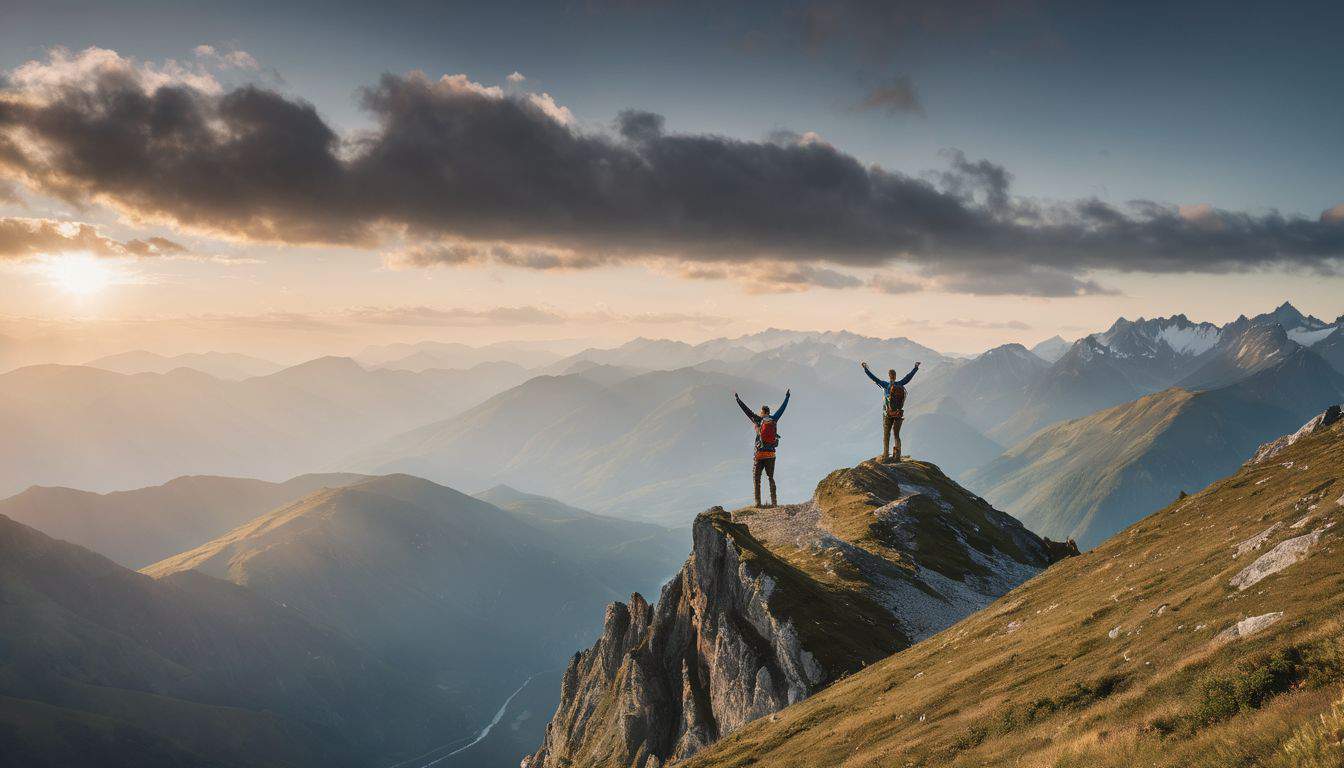
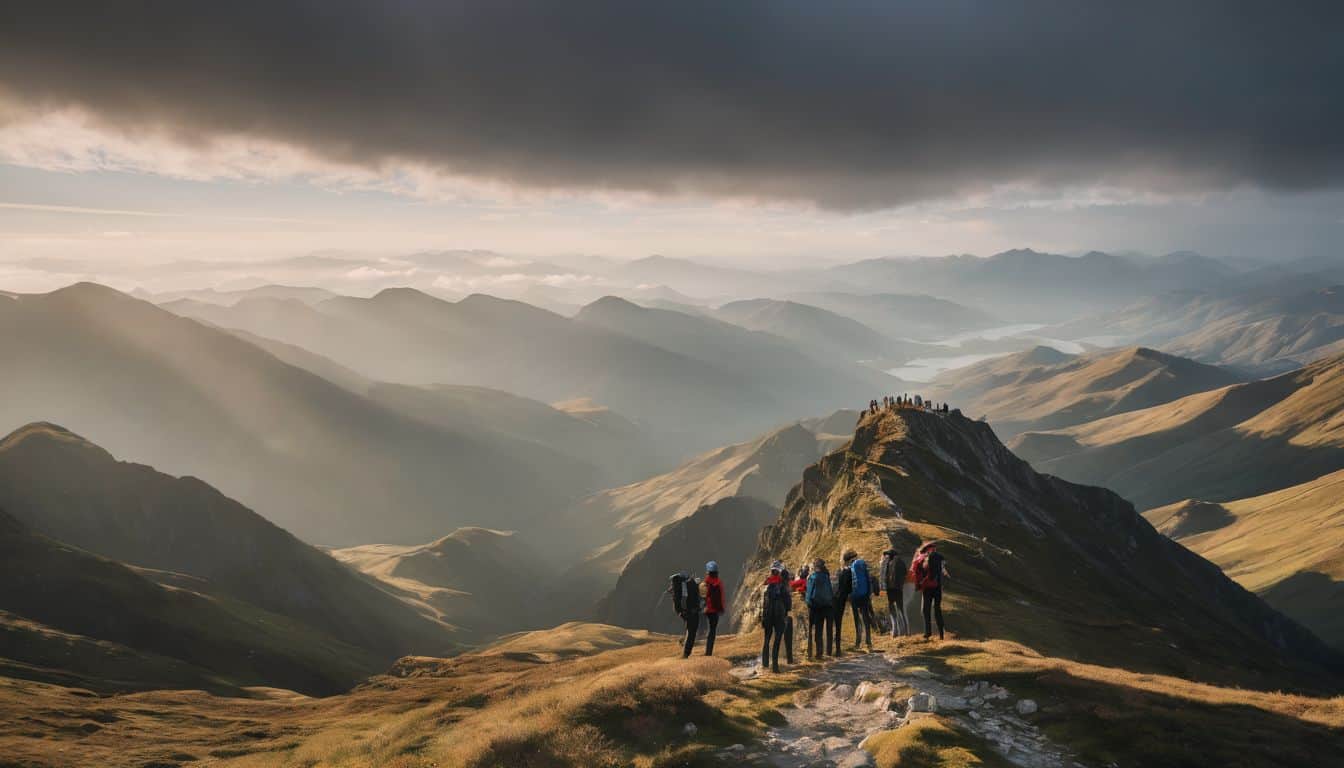
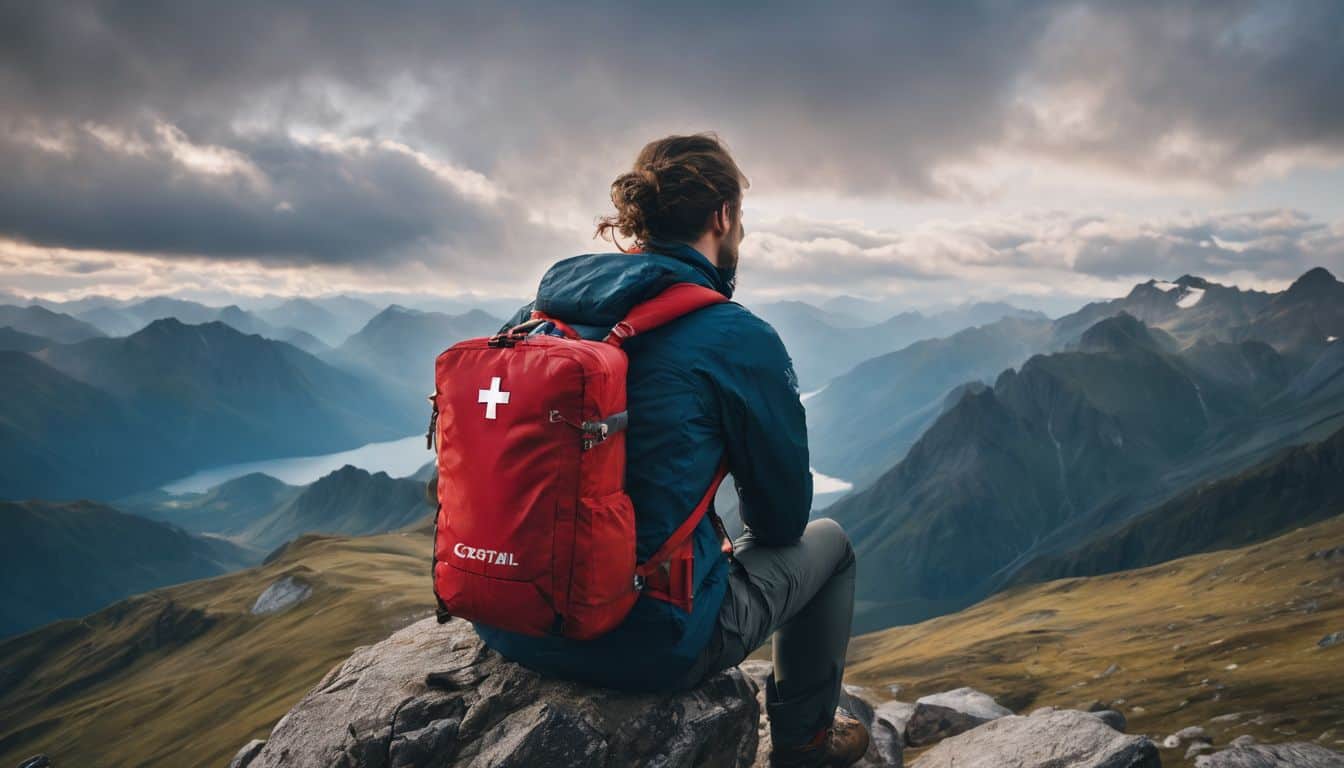
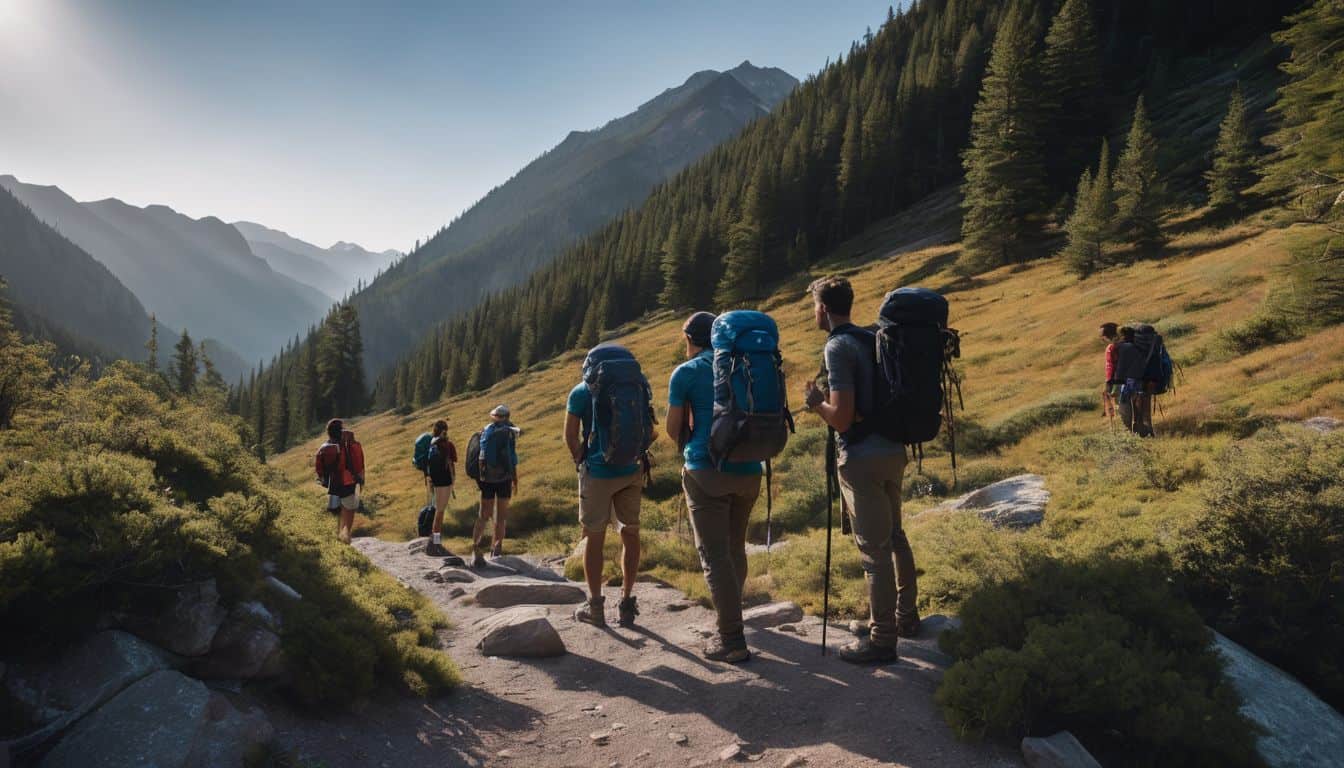
Leave a Reply